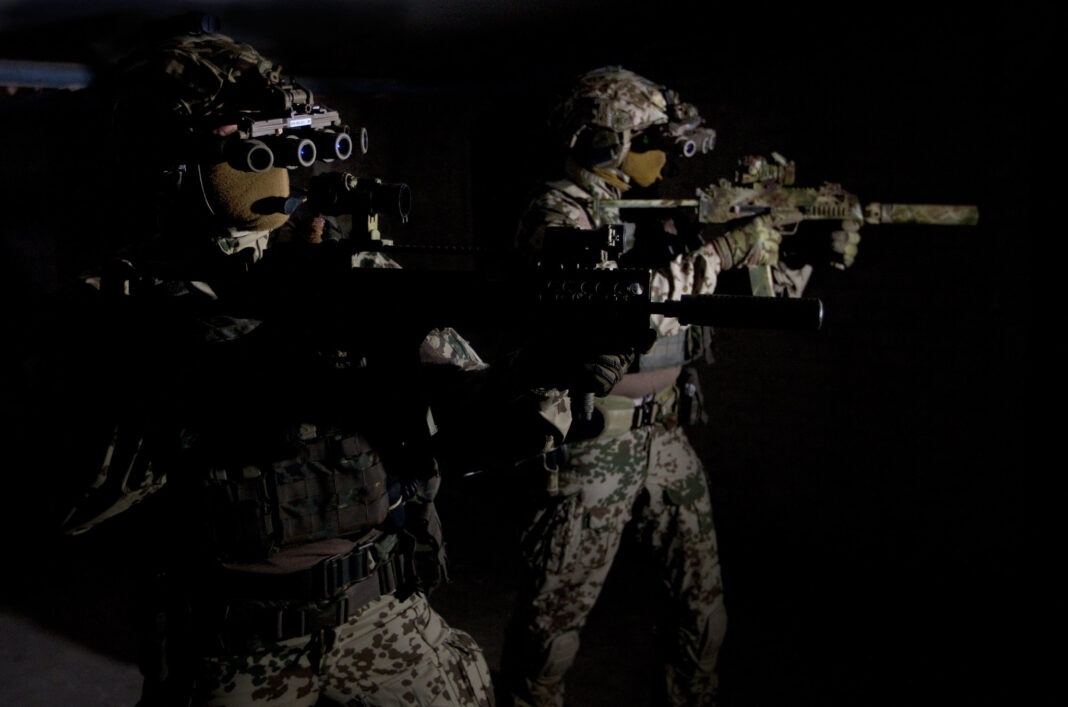1.0 Introduction
The Kampfschwimmer (meaning ‘combat swimmer’ in German) is a special operative unit of the German Navy. They are an elite group of highly trained military personnel who specialize in underwater operations and maritime counterterrorism.
Officially known as the Kommando Spezialkräfte Marine (KSM), the Kampfschwimmer form the maritime component part of the Bundeswehr special forces. They undergo rigorous training in various kinds of combat and are equipped with specialized weapons and equipment for underwater operations. Their training includes advanced swimming and diving techniques, as well as marksmanship and hand-to-hand combat.
2.0 Motto, Symbols, Patches
2.1 Motto
The KSM motto: “Lerne leiden, ohne zu klagen!” translates to “Learn to suffer without complaining!” in English. This motto encapsulates the spirit and mindset required of special forces personnel, emphasizing endurance, resilience, and mental toughness.
This motto serves to remind soldiers that they will likely face difficult and demanding situations during their training and operational missions. It encourages them to develop the ability to endure physical and mental hardships without voicing complaints.
2.2 Symbols
The KSM adopts symbols that reflect their specialized training and operations, which often involve amphibious and maritime missions.
The trident could symbolize their ability to operate effectively in aquatic environments, demonstrating their skills in underwater combat, reconnaissance, sabotage, and other maritime operations. Historically, the trident has been used to represent sea gods or deities, and it’s often used to denote a connection to the sea, water, and naval prowess.
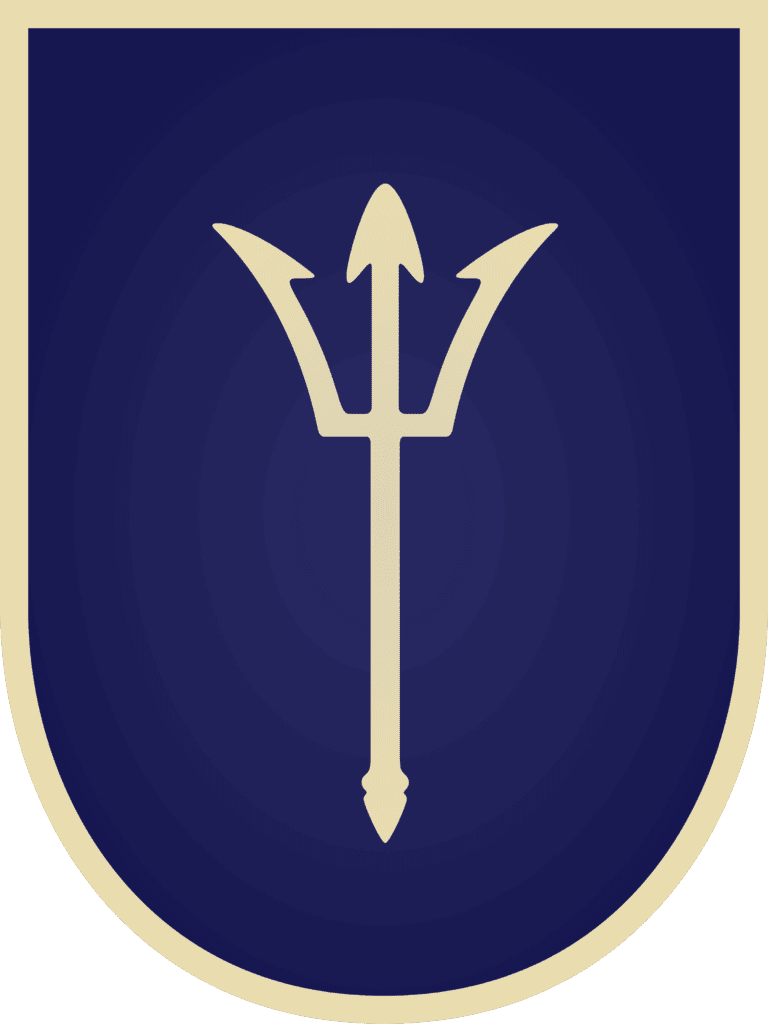
The KSM’s coat of arms consists of a swordfish, laurel and parachute in a gold color. The swordfish is a powerful and agile marine creature, often associated with speed and accuracy. In the contents of the KSM, the swordfish could symbolize their ability to swiftly navigate through the water and carry out underwater operations with precision.
The parachute likely symbolizes the company’s airborne operations capabilities. These capabilities enable the KSM to deploy quickly and stealthily into various environments, both over land and sea.
Laurel leaves are often used to symbolize victory, honor, and accomplishment. In the context of the KSM, laurel leaves could represent their achievements, professionalism, and excellence in difficult missions across different domains – land, air, and sea.
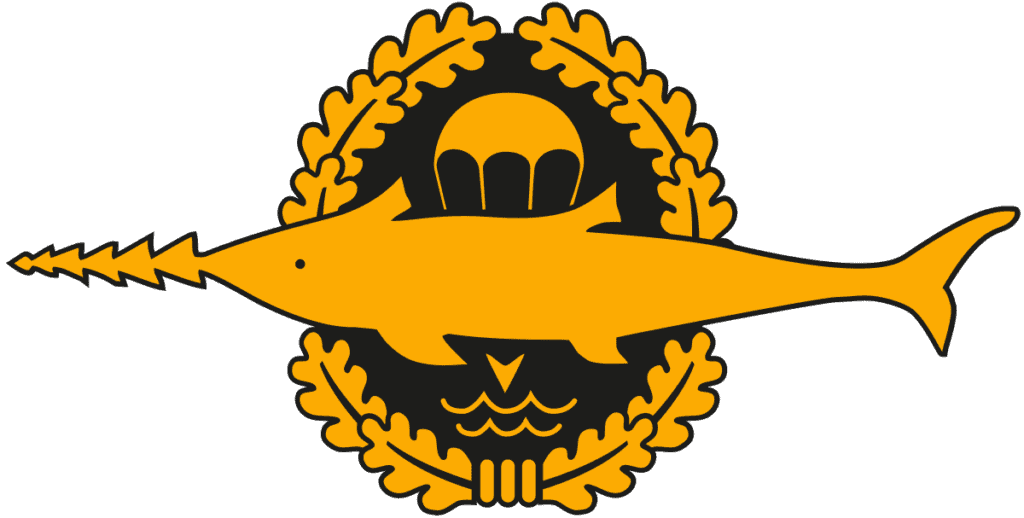
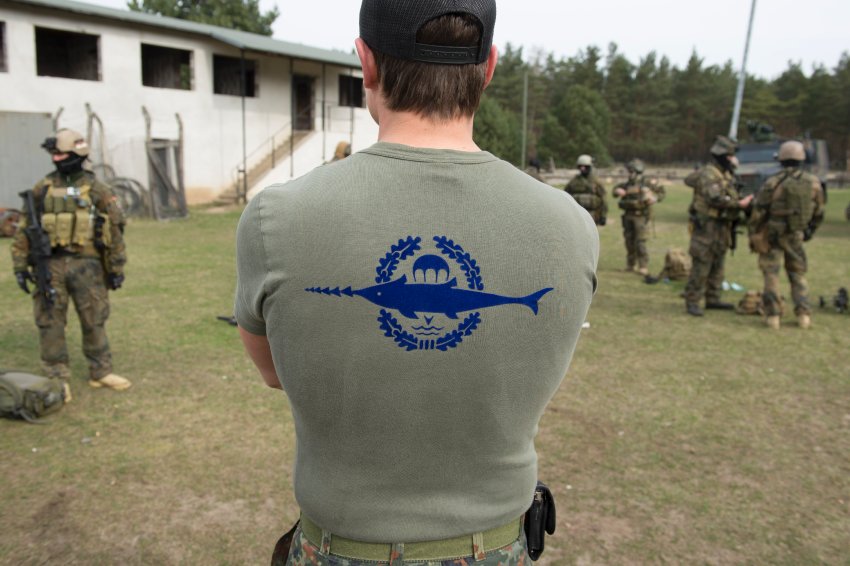
2.3 Patches
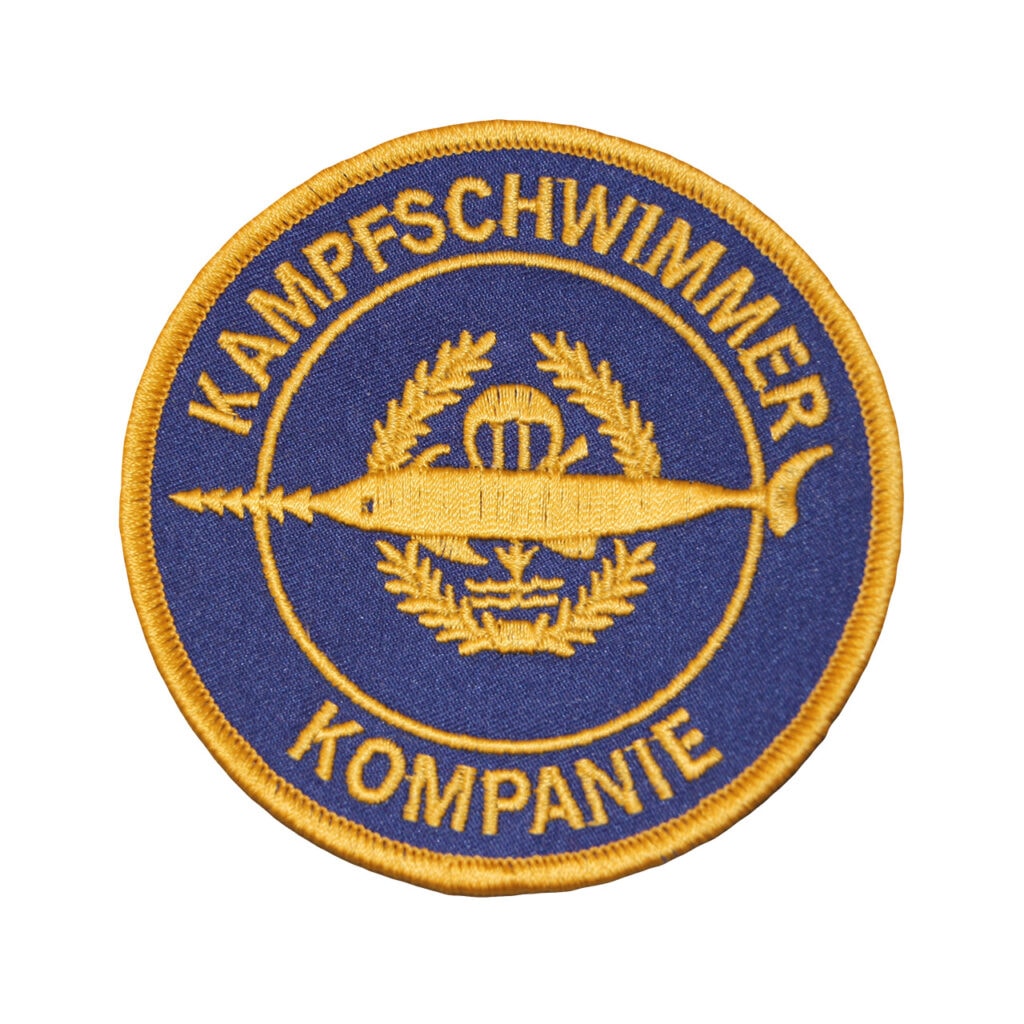
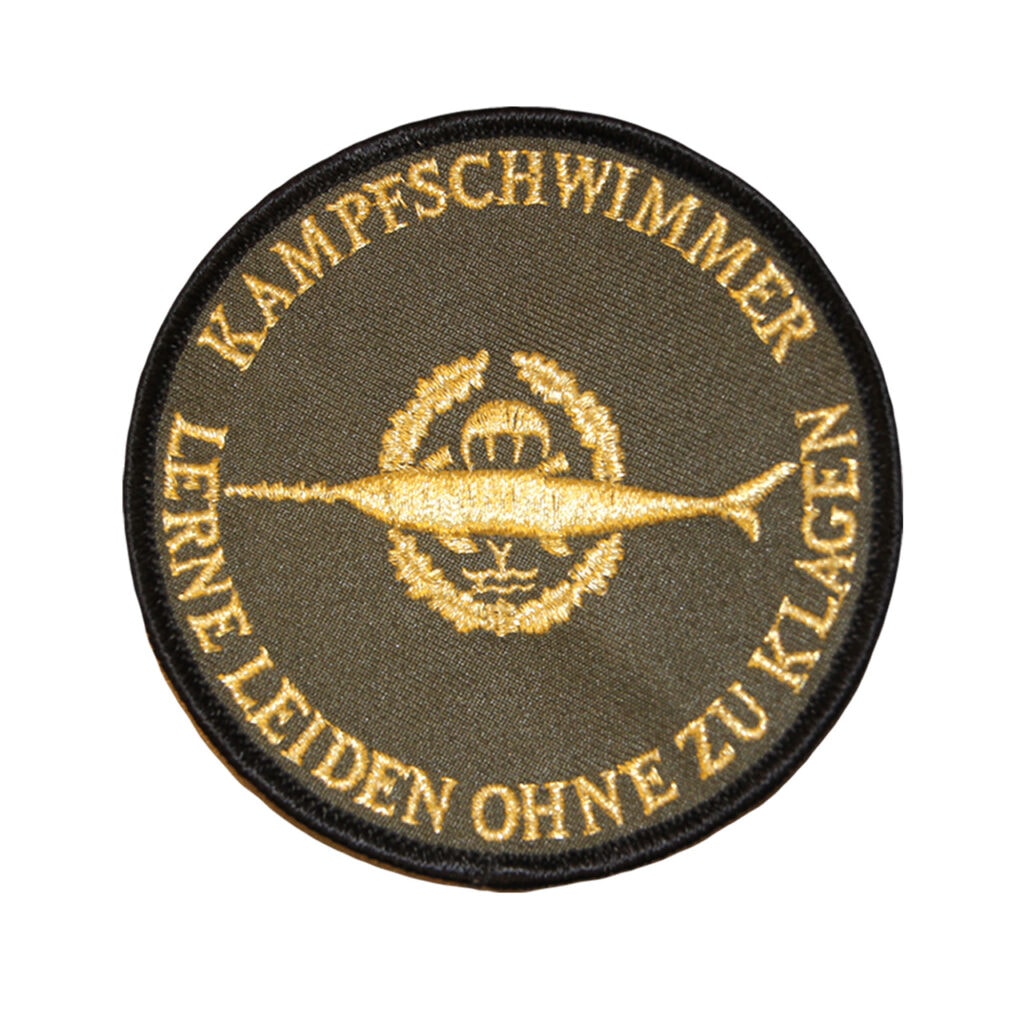
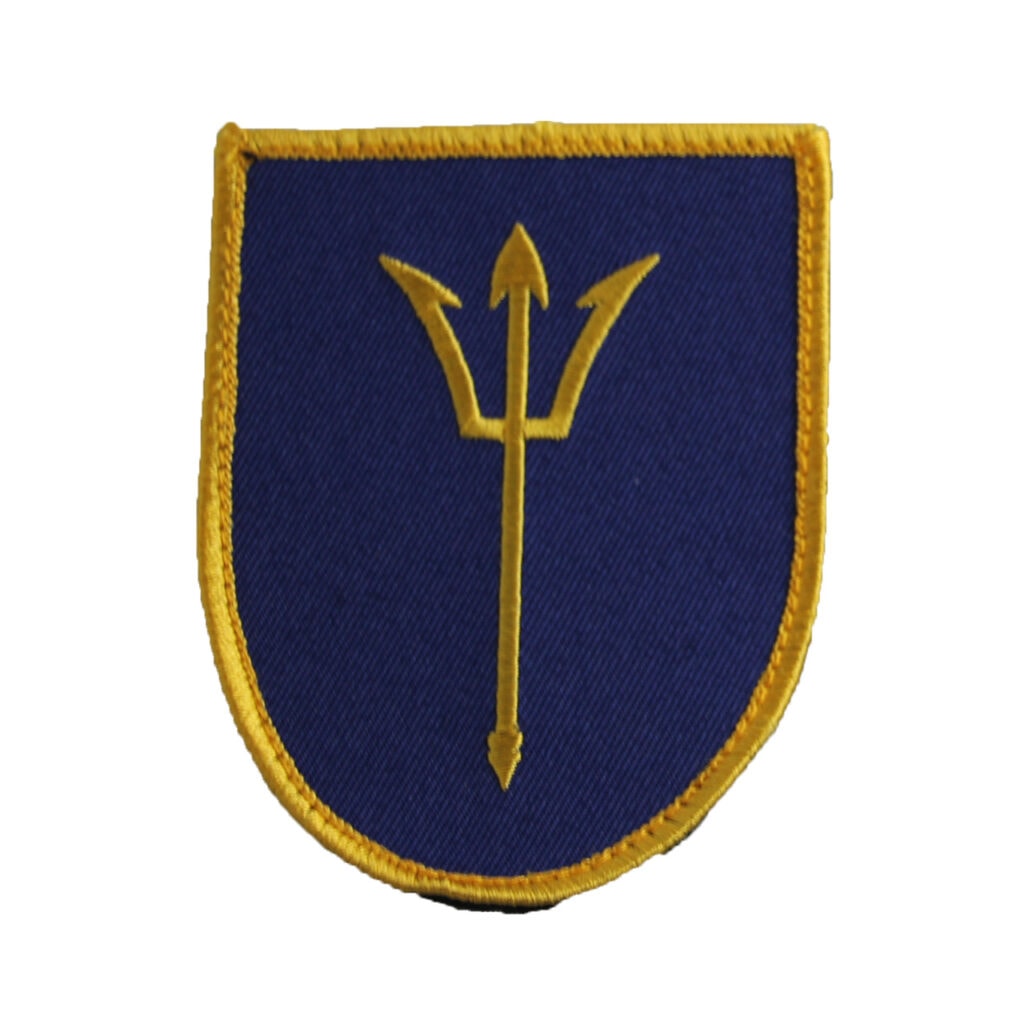
3.0 History of the KSM
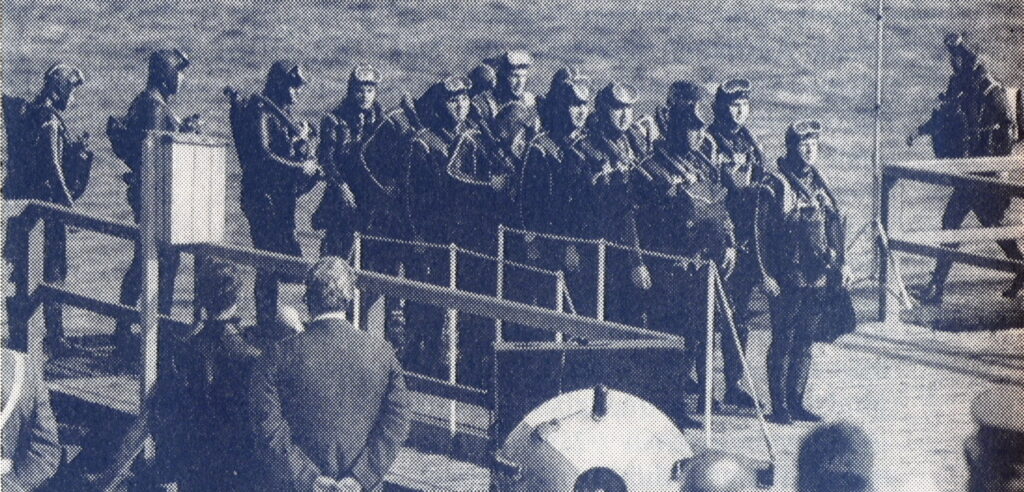
The origins of the Kampfschwimmer date back to World War II when the German Navy founded the Kleinkampfverbände (meaning “small battle units” in German) to conduct special covert missions against Allied ships and coastal targets.
The Kleinkampfverbände were equipped with specialized manned torpedoes, explosive charges, and underwater mines during the war. After the war, the German Navy was disbanded and the Kleinkampfverbände ceased to exist. [Source]
In 1958, the Kampfschwimmer was officially formed as part of the new German Navy. Accordingly, the Kampfschwimmer received training by the Nageur de combat in France. The Kampfschwimmer were skilled in land and water combat, however, their training in France made them equally as competent in the air as parachutists.
Since 1974, the Kampfschwimmer has been primarily based at the Eckernförde naval base in the state of Schleswig-Holstein in northern Germany, being that it is the only deep-water port of the German Navy on the Baltic Sea.
Above all, the Kampfschwimmer forces are highly mobile and versatile in combat and are capable of operating in a variety of environments and conditions. Their intense training makes them capable of maritime counterterrorism, search and rescue operations, and underwater demolition.
4.0 Mission of the KSM

The goal of the Kampfschwimmer is to support the missions of the Bundeswehr through special operations in coastal environments. They are organized within the German navy and serve as a specialized unit with naval special forces.
The Kampfschwimmer consists of multiple units with various specializations, such as combat swimmers and diver groups. The Kampfschwimmer are triphibious marines, operating on air, land, and waterfronts. However, about 80 percent of their operations are conducted on land. [Source]
The frogmen are divers, parachutists, speedboat pilots, explosives experts, lone fighters and much more. In an emergency, they are the first to go on a mission, and in the most dangerous situations.
Their talents include:
- Obtaining key information in crisis and conflict areas
- Freeing hostages
- Repossessing ships
- Detecting targets abroad
- Offensive defense against terrorist threats
- Covert operations for the Bundeswehr.
In addition, they are backed by special operations boat teams and maritime mobile medical squads. [Source]
On April 1, 2023, the Commander of the Fleet and Support Forces and Deputy Inspector of the Navy, Vice Admiral Frank Lenski, announced “KSM2023+”, a drastic growth of KSM numbers. By 2025, the German KSM Naval Special Forces Command will double to 600 personnel. The current training group was disbanded and set up as a new unit as the Ausbildungszentrum Spezialkräfte der Marine (meaning ’Training Center for Special Forces of the Navy’ in German.) [Source]
In addition, two new companies are to be added: A special operations boat company and a support company. Though the Kampfschwimmer are a notable part of the organization, the majority of expansion will go towards support staff. The current operator to support staff ratio is 1:7. [Source]
This immediate and ambitious growth of the KSM demonstrates the growing importance of naval special forces.
KSM’s Role in National and International Security
In addition to its core missions, the KSM also plays a key role in national and international security. This includes:
- Participating in joint operations and exercises with other special forces units
- Contributing to NATO missions
- Providing support for humanitarian operations
5.0 Organizational Structure
The Kampfschwimmer operates in groups as small as four to five men. For example, each unit has a team leader, forward air officer, sniper, medic, and radio operator. The KSM is organized into several specialized units, each with its own specific roles. These include:
- Combat diver units
- Special boat units
- A command and support unit
Special Units within KSM and Their Roles
Each unit within the KSM has a specific role to play.
- The combat diver units are responsible for deep-sea demolition and sabotage, reconnaissance, and personnel recovery.
- The special boat units handle maritime interdiction operations and provide transportation and support for the combat diver units.
- The command and support unit oversees the planning and coordination of operations, as well as logistics and administration.
6.0 Training of the KSM
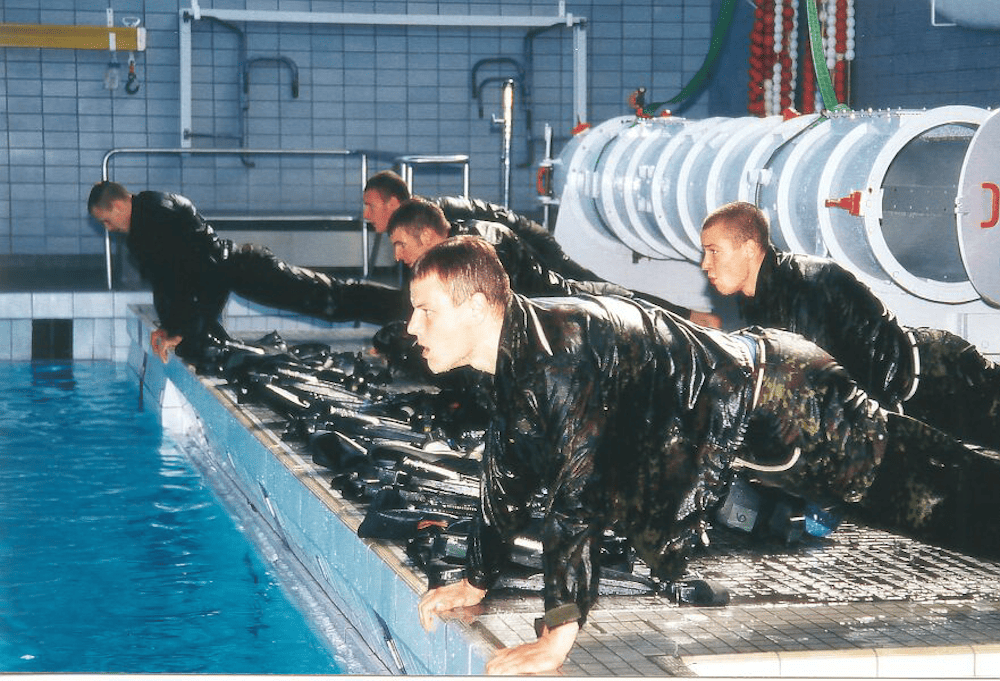
The three-year training and selection process of the Kampfschwimmer is one of the most strict, expensive, and physically demanding training courses of the Bundeswehr. This program tests candidates’ physical and mental toughness, as well as their ability to operate effectively under extreme conditions. As a result, only a small percentage of candidates successfully complete the program and join the KSM.
What makes the training of a combat swimmer strenuous are the enhanced underwater exercises. For example, candidates who make it past initial screening and basic training move on to specialized combat diver and advanced tactical training. Specialized combat diver training consists of the following courses:
- Combat swimmer preparatory training
- Powerboat driving
- Explosive assistance/explosive conductor training
- Open water warfare
- Combat swimmer tactics
- Parachute jump training
- Survival course for specialized forces
- Medical training
- Mountain and winter combat training
- English language proficiency
[Source]
Those training to become combat swimmers must learn to use the properties of water to their advantage, as well as adapt to constant cold and wet conditions. This includes conducting underwater operations during the night, when the pitch black becomes both an asset and a fault. In addition, trainees must learn to overcome the natural fear of drowning to increase combat efficiency underwater. [Source]
Finally, candidates undergo additional mission-specific training based on specific missions that may be conducted as seen fit. In this training, the candidates exercise specific scenarios such as reconnaissance and search-and-rescue operations. [Source]
In conclusion, the nearly three and a half years of rigorous training are meant to prepare trainees for the physically demanding nature of maritime combat. Being triphibious marines, it is necessary that the Kampfschwimmer forces are adequately prepared for the unpredictable nature of maritime counterterrorism and operations.
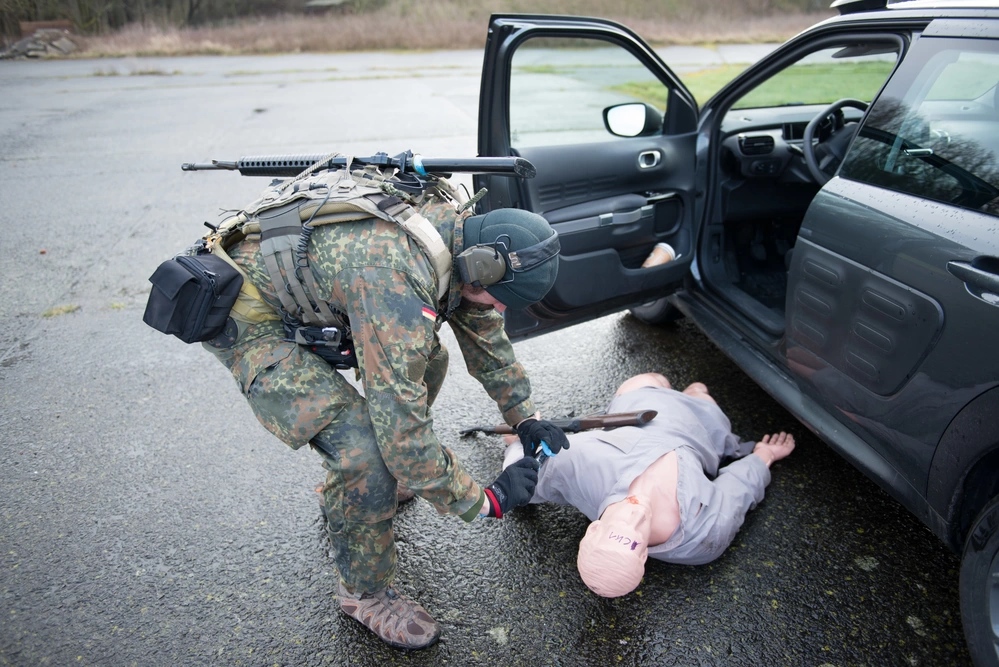
7.0 Equipment and Weaponry of KSM
7.1 The Advanced Arsenal of KSM

The KSM is equipped with a wide range of advanced weapons and equipment. This includes:
- Heckler & Koch G36 assault rifles
- Heckler & Koch MP7 submachine guns
- Heckler & Koch USP semi-automatic pistols
- Heckler & Koch MG4 and MG5 machine guns
- Heckler & Koch G82 sniper rifle
- Panzerfaust 3 anti-tank weapon
- DM51 hand grenade
In addition, the KSM uses specialized equipment for diving, parachuting, and communications.

7.2 Diving and Personal Equipment
7.2 Diving and Personal Equipment
The KSM uses a variety of diving and personal equipment, including:
Body Armor:
- Brand: Safariland
- Model: Protech Tactical Titan Assault Vest
Scuba Equipment:
- Brand: Dräger
- Model: LAR 8000 rebreather
Helmets:
- Brand: 3M
- Model: Combat II Ballistic Helmet L110
Communication Equipment:
- Brand: Motorola
- Model: APX 8000 HXE All-Band P25 Portable Radio
Submarine Scooters:
- Brand: Yamaha
- Model: Yamaha RDS250 Seascooter
Night Vision Goggles:
- Brand: ATN
- Model: ATN PS15-4 GEN 4 Night Vision Goggle System
Misc. equipment:
- Boarding rods
- Diving fins
- Diving knives
- Oxygen flask
- Combat belt
- Buoyancy compensator
- Underwater compass
- Parachutes
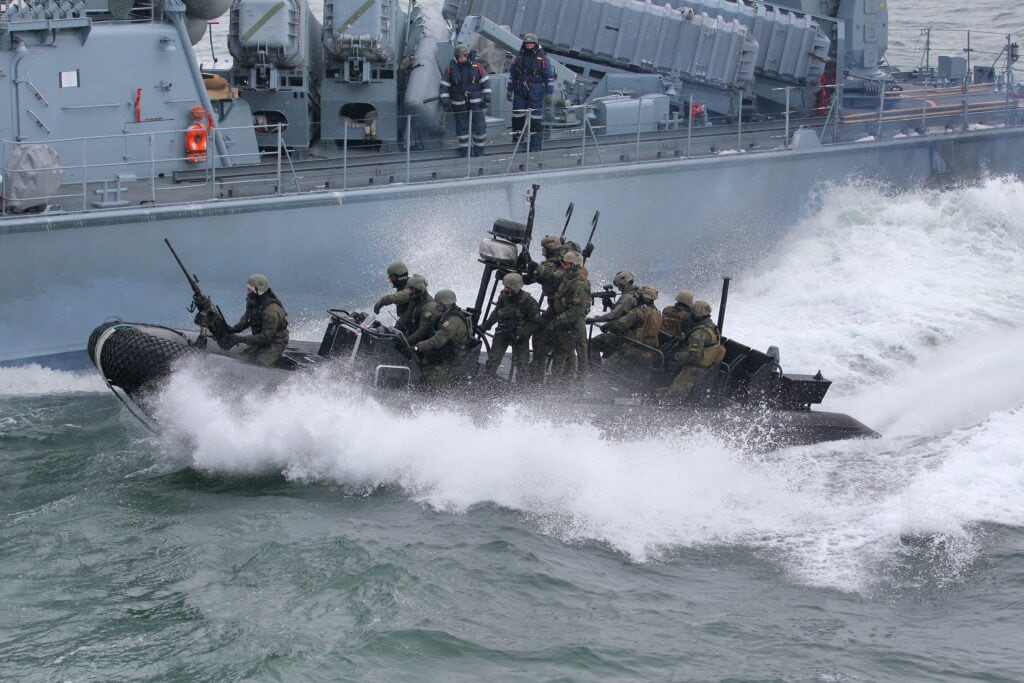
7.3 Vehicles and Transportation
Boats:
- PB90
- RHIBs
- CRRC
- SOC
Submarines:
- Type 212A
- Type 214
Diving and underwater vehicles:
- Driver delivery unit (DDU)
- SEAL Carrier
Aircraft:
- H145M
- NH90 Sea Lion or Sea King
- Airbus A400M
- Lockheed C-130
7.4 How Technology Enhances KSM Capabilities
Technology plays a key role in enhancing the KSM’s capabilities, such as the use of advanced navigation and communication systems, night vision devices, and unmanned aerial vehicles (UAVs) for reconnaissance and surveillance. The KSM also uses the CH-53 Sea Stallion helicopter for transportation and insertion into operational areas.

8.0 Past and Present Missions
Over the years, the KSM has been involved in a number of significant missions, such as domestic operations to international deployments. While the specifics of many of these missions remain classified, they have included tasks such as:
- Counter-terrorism operations
- Hostage rescue missions
- Underwater demolition and sabotage
These missions have demonstrated the KSM’s capabilities and its commitment to protecting Germany’s interests at home and abroad.The KSM have a history of notable operations. The following are examples of some of their significant missions and contributions:
- Operation Deny Flight (1993)
- Operation Enduring Freedom (2001-2014)
- JSOTF Gazelle (2018-2023)
- Operation Atalanta (2008-Present)
8.1 Operation Deny Flight (1993):
The Kampfschwimmer forces participated in Operation Deny Flight, a NATO-led operation aimed at enforcing a no-fly zone over Bosnia and Herzegovina during the Bosnian War. Their role included conducting maritime surveillance and interdiction operations in the Adriatic Sea.
8.2 Operation Enduring Freedom (2001-2014):
Kampfschwimmer units were deployed to Afghanistan as part of the International Security Assistance Force (ISAF) mission. They contributed to counterterrorism efforts, conducted maritime operations, and supported coalition forces in the region.
8.3 Joint Special Operations Task Force (JSOTF) Gazelle (2018-2023):
In this case, KSM was deployed to Niger to help train the 41st Battalion Special d’Intervention with the Kampfschwimmers being the core of the instructors. The goal of the mission was to establish rigorous training and evaluation of the Nigerian special forces, including their instructors. [Source] [Source]
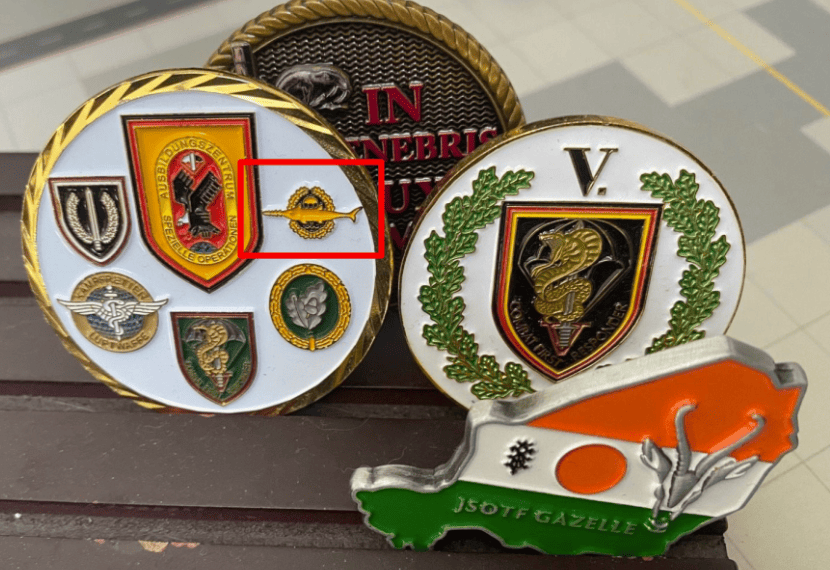
8.4 Operation Atalanta (2008-Present):
Finally, the Kampfschwimmer forces have participated in Operation Atalanta, a European Union-led mission to combat piracy off the coast of Somalia. They have been involved in maritime interdiction operations, protecting merchant vessels, and ensuring the safety of maritime trade routes in the region. [Source]
9.0 Conclusion
In conclusion, the KSM is a highly valuable asset to the German Navy. Because of the rigorous training and sophisticated weapons arsenal, the capabilities of these frogmen cannot be understated. From JSOTF Gazelle to Operation Atalanta, the KSM has been an instrumental ally in special operations and training initiatives.

